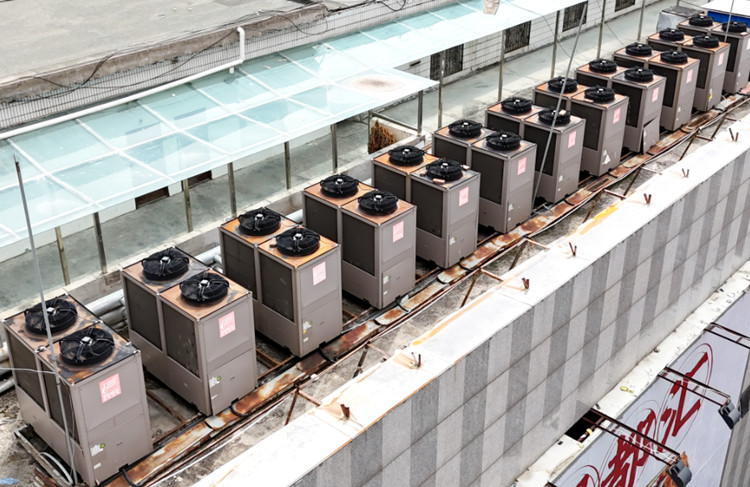What is the Difference between CO2 Heat Pump and Air Source Heat Pump?
CO2 air source heat pump refers to a heat pump unit that uses carbon dioxide (R744) as a refrigerant, while common air source heat pumps usually use traditional refrigerants (such as R410A, R134a, etc.). The following are the main differences and key points between the two:
1. Difference in refrigerants
CO2 heat pump: uses natural working fluid carbon dioxide (R744), which is highly environmentally friendly (ozone depletion potential ODP=0, global warming potential GWP=1), non-toxic and non-flammable.
common air source heat pump: mostly uses Freon refrigerants (such as R410A's GWP≈2088). Although ODP=0, the GWP is high and there is a certain environmental controversy.
2. Differences in working principles
CO₂ heat pump: Using transcritical cycle (high-temperature and high-pressure gaseous CO₂ directly releases heat), it can operate efficiently in low-temperature environments, and the heating water outlet temperature is higher (up to 80°C or above), suitable for high-temperature demand scenarios (such as commercial hot water systems, industrial drying).
common air source heat pump: Using subcritical cycle (refrigerant liquefies and releases heat through the condenser), the heating temperature is usually lower than 60°C, and the efficiency may decrease in low-temperature environments.

3. Performance characteristics comparison
1) Low temperature adaptability
* CO₂ air source heat pump
Can still operate efficiently below -25℃
* Ordinary air source heat pump
Efficiency drops significantly at low temperatures (such as below -15℃)
2) Heating temperature
* CO₂ air source heat pump
Can reach 80~90℃, suitable for high temperature water supply needs
* Ordinary air source heat pump
Usually ≤60℃, suitable for floor heating and domestic hot water
3) Environmental protection
* CO₂ air source heat pump
GWP=1, zero ODP, environmentally friendly
* Ordinary air source heat pump
GWP is higher (such as R410A's GWP≈2088)
4) System pressure
* CO₂ air source heat pump
High operating pressure (supercritical state reaches more than 10MPa)
* Ordinary air source heat pump
Low pressure (usually 3~4MPa)
5) Cost
* CO₂ air source heat pump
High initial investment, high maintenance technology requirements
* Ordinary air source heat pump
Low cost, high popularity
CO₂ heat pump
Commercial/industrial high-temperature hot water (such as hotels, hospitals), heating in cold areas, hot drying, etc.
Regions with strict environmental protection requirements (such as Europe).
common air source heat pump:
Household heating, domestic hot water, normal temperature commercial needs, suitable for mild climate areas.
5. Energy efficiency ratio (COP)
CO₂ heat pump: COP is higher in low temperature environment (especially excellent performance below 15℃), but may be slightly lower than ordinary heat pump under high temperature conditions.
Ordinary heat pump: COP is higher in normal temperature environment, but it needs to rely on electric auxiliary heating at low temperature, and the overall energy efficiency decreases.
6. Comparison of advantages and disadvantages
The core advantages of CO₂ heat pump are environmental protection, low temperature efficiency, and high temperature water supply capacity. It is suitable for special demand scenarios, but the cost and technical threshold are high.
common air source heat pump wins with low cost and mature technology, which is suitable for conventional household and commercial use.
If users pursue long-term environmental benefits or need high temperature heating, CO₂ heat pump is a better choice; if the budget is limited and the demand is conventional, common air source heat pump is more cost-effective.





